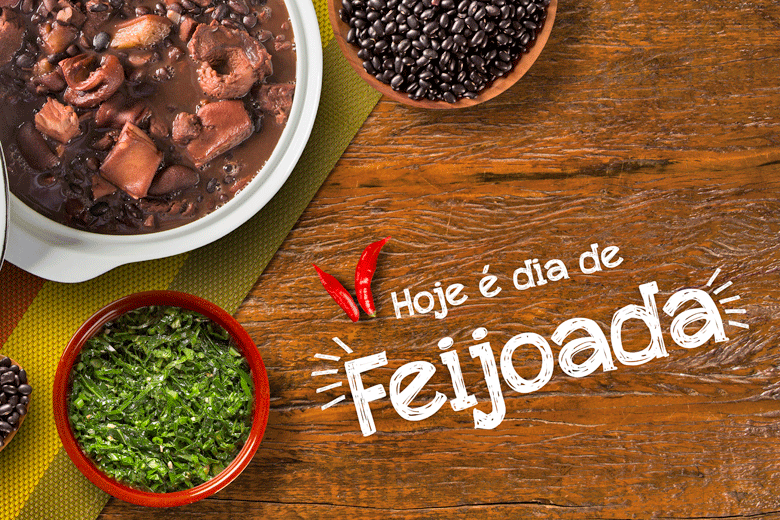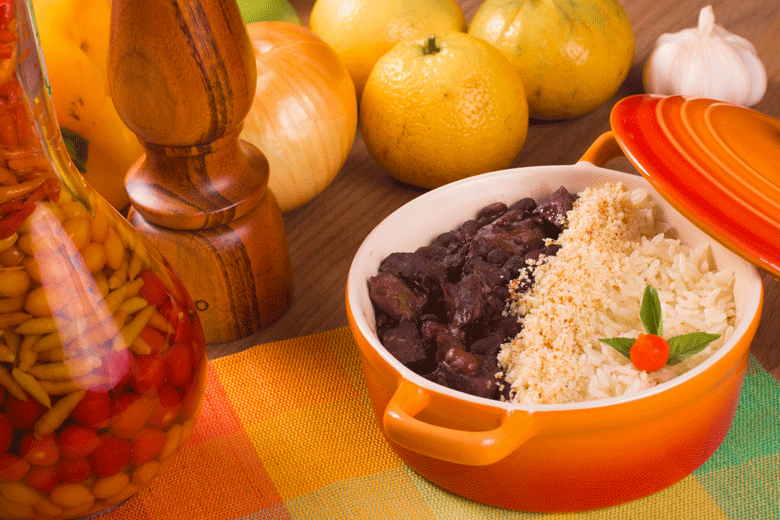 Friday is Feijoada day
Friday is Feijoada day
Feijoada is Brazil’s national dish. While there are many variations, it generally always contains beans and various meats cooked with spices, onions, garlic and oranges. Chillies are added in some of these recipes, but if not, hot sauce is never far away when this dish is being served.
On Fridays, virtually every establishment that serves food in cities like Rio de Janeiro makes Feijoada. Be it a cheap pub or the most expensive restaurant, Feijoada will be on the menu. In Rio de Janeiro, Friday is Feijoada day.
I became a fan of Feijoada when I first tasted it in a Portuguese bar in Capetown, South Africa. That version was made with white cannellini beans, whereas traditional Feijoada in Brazil is made with black beans. Regardless of this difference, the flavour was still to die for. It was comfort food of the highest order that I will never forget. So much so, that given the opportunity, I will make Feijoada at the drop of a hat.
flavour was still to die for. It was comfort food of the highest order that I will never forget. So much so, that given the opportunity, I will make Feijoada at the drop of a hat.
Indeed. So, when I recently came across a recipe for a traditional Brazilian Feijoada, I didn’t need any encouragement. I was so impressed by the recipe that I decided to make it. Nothing was going to stand in the way of making this dish.
Before doing that, however, I needed to order some ingredients. They are ingredients that might be available in any Portuguese kitchen, but they certainly are not things I had in my larder. I am talking about ingredients like Paio sausages (a smoked Brazilian sausage made with pork loin and seasoned with garlic, salt, and Chillies) , corned beef (as a substitute to carne seca), the black beans themselves and Linquica sausages
Over and above these ingredients, I also needed smoked gammon, brisket (to make corned beef), a smoked ham hock, chives, parsley, onions, garlic, oranges, Chillies, pork belly, pork ribs, some olive oil and various herbs and spices.
Lets make Feijoada

The recipe
After hunting on the web, I finally found suppliers for the ingredients I didn’t have. I placed my orders, and after receiving everything, I decided to continue the tradition in Rio De Janeiro. Yesterday was Friday, and I made Feijoada
To make this traditional Feijoada I needed 500 grams of pre-soaked black beans (see notes ) , one large onion) , 250 grams of smoked gammon ( as a substitute to smoked bacon), 300 grams of pork ribs, 300 grams of Linguica , 300 grams of Paio sausage , 300 grams of pork belly, 300 grams of corned beef ( I made my own with brisket at the beginning of the week) ,the pre-soaked ham hock ( see note ) , one orange, four African birds eye Chillies ( as a substitute to Malaguetas) , three tablespoons of olive oil, a small handful of chives and two tablespoons of chopped parsley , two cloves of garlic, a quarter teaspoon of paprika, five fresh bay leaves, a pinch of cumin and salt and pepper to taste
Before I could make the dish, I needed some pre-preparation. I chopped all the meats (with the exception of 50 grams of gammon) and sausages into bite size pieces. Next, I cut the ribs between the bones. I then chopped the remaining gammon into 6mm blocks. I also peeled and finely sliced the onion. After that, I peeled and finely chopped the garlic and chives. Finally, after washing the orange, I finely chopped the parsley
The first step in making the traditional Feijoada was to remove the beans from the water they had been soaking in. I then placed the beans in a pot and covered them with fresh water. After bringing them to the boil, I turned down the heat and added the whole orange (with its skin still on) and the corned beef. I then allowed everything to cook at a slow simmer for thirty minutes.
The next ingredient to go into the pot was the ham hock. I allowed it to cook for thirty minutes, and then removed the orange. I then added the ribs, sausages, and bite-sized gammon pieces. I let this cook until the beans were soft and the meat and sausages were becoming tender. It took me two and a half hours, but it could have taken more or less time. It is something that I had be judge rather than relying on a fixed time.
In the next step, I heated the olive oil in a big skillet. I then added the onion and fried it until it was translucent. Next, I added the garlic and sauteed it for about a minute. I then added the 6mm blocks of gammon to the pan. I let the gammon brown slightly, and then added the chives and parsley (which together are called Cheiro Verde), paprika, cumin and the Chillies, and I gave everything a good stir.
I then removed a ladle full of the beans without broth from the pot and mashed it with a fork on a plate. Once this was done, I added the mashed beans to the fried onion mixture. I added a little broth to the pan and sautéed the beans for a few minutes. After that, I ladled the sautéed beans into the pot with meat and remaining beans. I then stirred the feijoada until it started thickening
And that was it. The feijoada was ready to serve. I didn’t serve the dish with any accompaniments, but in Brazil Feijoada is traditionally served with white rice, braised Kale, Farofa (toasted cassava flour), fried cassava and orange slices
Finally
Feijoada is not a dish that you can make quickly. In Brazil, families set aside whole days over weekends to make the dish. It is a dish where the whole family gets involved to make it. Often, they start it in the morning to serve it as a supper meal. Why not consider asking your friends and family to join when you make this dish? Maybe even turn it into a theme meal . It will be a fun day that everyone will enjoy. And the end of the cooking will certainly be enough of this traditional Feijoada for everyone. It serves at least eight people
Notes
1) Only use beans that can cook long and slow, without becoming soft too quickly. The beans need to be soaked in water prior to use (normally overnight)
2) The ham hock should be soaked in water overnight. The water should be replaced the next morning with fresh water. The hock should be soaked for at least another two hours before it is added to the dish. Not doing so could make the Feijoada excessively salty
